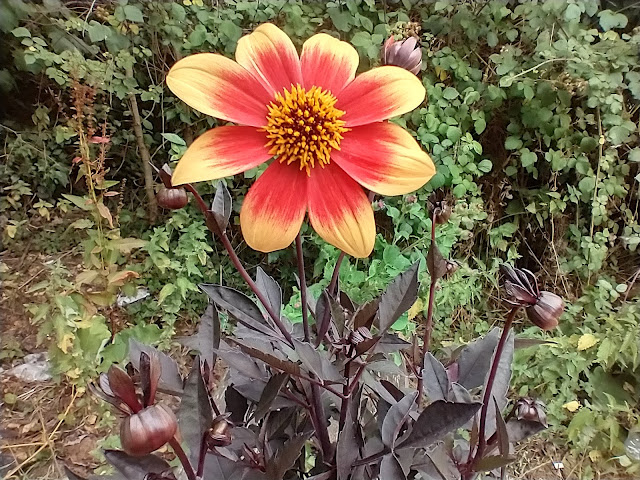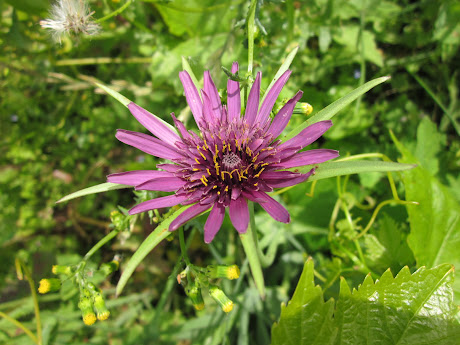Book Review: Attracting Garden Pollinators
The review bus has ambled down the lane and I'm delighted I'm the next stop on the blog tour for Jean Vernon's latest book Attracting Garden Pollinators. It's great to have a volume which covers all kinds of insect pollinators - as well as bees - as the importance of many of them is often overlooked for our gardens.
In the opening chapters stuffed with fascinating insights we find: without wasps we wouldn't have any bees (they evolved from them); some bees nest in snail shells as well as thrushes liking to find them (the snails that is); and hoverflies are highly useful pollinators as well chomping away at those pesky aphids. Jean neatly shows how inter connected everything is and we interfere with just one element at our peril.
Findings reported by the Natural History Museum recently show there's been a shocking decline in the world's insect populations. Our extensive network of gardens is a wonderful opportunity we as individuals can help pollinators and other insects back from the brink of extinction.
Jean provides plenty of guidance on how this can be done and suggests a patchwork of key habitats that are important. Amongst the usual suspects, I was surprised to see bare soil has a role to play as it provides a nesting site for some wasps and bees plus a space for pupating moths. I've revised my plans to re-sow a bare patch of lawn as a result. I'm also pleased to find my relaxed way of gardening has reaped benefits for hoverflies as many of them love to lay their eggs in rotting leaves and vegetation; I've left quite a few seed trays around the garden which have filled up with leaves over the winter. Perhaps that explains the clouds of hoverflies I've enjoyed watching around the Erigeron this week?
A major chunk of the book looks at which plants are good for our garden insect friends with recommendations given for individual species as well as specific chapters at the end on pollinator friendly garden plants and weeds - the latter cheekily entitled plants behaving badly. For those cautious about introducing weeds into their garden, I liked Jean's suggestion of confining valuable-to-insect-plants such as dandelions and nettles to a few easycare pots.
Jean is a delightful companion who gently takes you by the hand to show you what's actually there. She was totally captivated by nature from an early age and it's refreshing to find someone who still finds that world fascinating, and now has the knowledge to match. She provides plenty of references at the end of the book should you wish to follow her and learn more.
The book's a natural companion to Jean's previous one, The Secret Lives of Garden Bees. It's also a timely publication judging by the amount of chat I've seen on Twitter lately about the absence of swifts and swallows over our gardens this summer. If we welcome all kinds of insects to our gardens, then we'll provide a better space for our more obvious and well-loved garden visitors too.
Note: I received a copy of Attracting Garden Pollinators from the publisher in return for an honest review. The Secret Lives of Garden Bees is my own copy.













It is a relief to know that the bare patches are also serving a useful purpose, isn't it?
ReplyDeleteIt is indeed Diana!
Delete